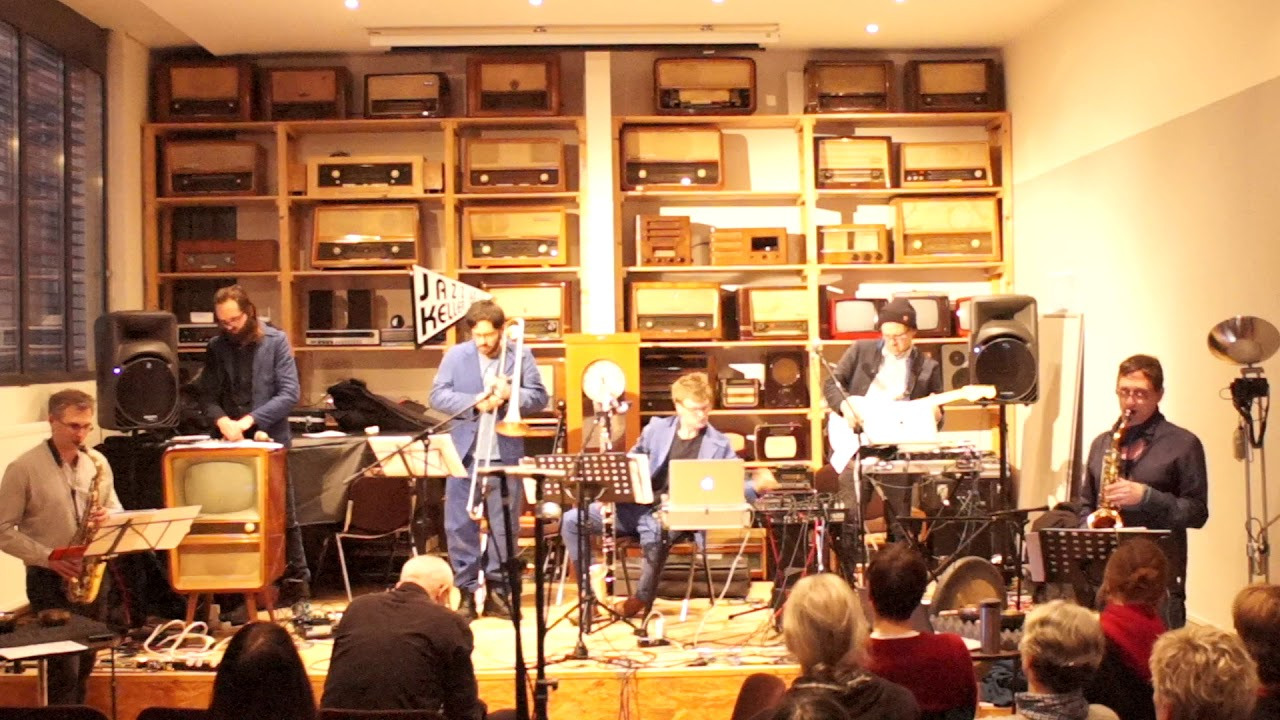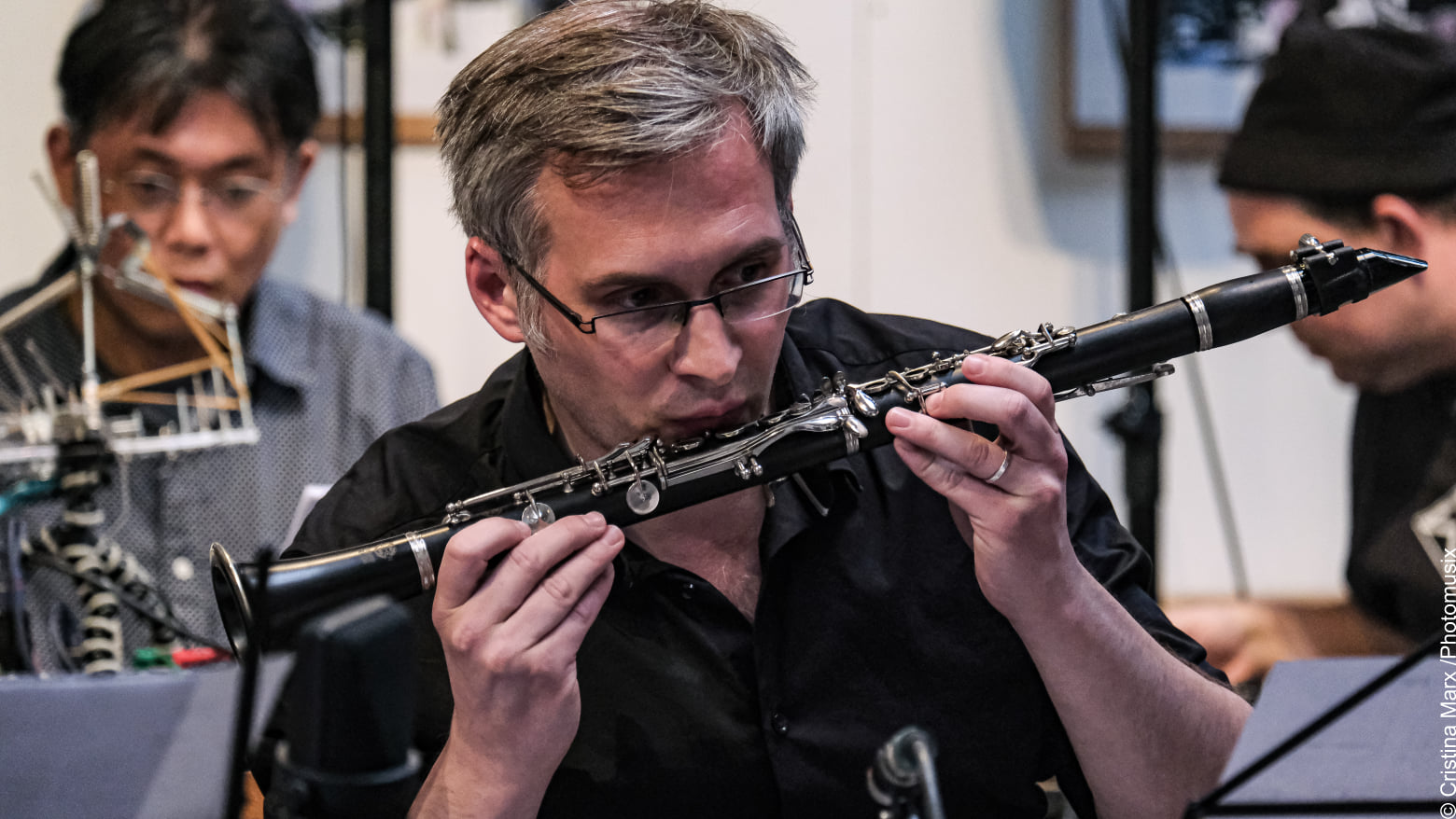Dai due mondi
for one improvising trumpet player and ensemble
WP 18.09.2020, Museum Potsdam
The fundamental idea of the piece is the juxtaposition and interaction of the improviser (trumpet player) with the ensemble (quintet), which performs solely notated material.
The improviser is completely free in their musical decisions. They can choose to engage in close, direct interaction with the ensemble, or alternatively, contrast with it, or alternate between these two approaches. The improviser has the freedom to start, pause, and end their playing at will. For guidance, the improviser receives an overview part, which, like a piano reduction (but with significantly less detail), shows the general flow of the composition. This part intentionally omits information about harmony, tone colors, or exact rhythms, to avoid interfering with the essential mental attitude of improvisation—acting and reacting in the moment based solely on listening.
The ensemble musicians strictly adhere to the score. However, they have the opportunity and the responsibility, either collectively or with the help of a chosen ensemble leader, to shape the inner form of the piece, primarily on a sonic level.
The composition is divided into three sections: A – B – C, which must always be performed in this order. However, each section has three variants (e.g., A1, A2, A3), from which the ensemble spontaneously selects one during the performance. This decision is then binding for all players, so that not different variants of the same section will sound simultaneously. As a result, there are 3³ = 27 possible ways to shape the form of the piece. It is desirable for the piece to be performed in a different version at each performance, with a new combination of the various variants of sections A, B, and C.
The frequent fermatas provide further opportunities for interaction with the improviser’s playing flow.
The oboe has a special role. In section A, it rests; in section B, it integrates into the ensemble; and in section C, it becomes the duo partner of the trumpet. The oboist has a selection of actions available, which are noted on a separate sheet in the appendix of the score. This sheet applies to every variant of section C, regardless of which variant the ensemble chooses. The actions can be freely selected, combined, or separated by pauses. However, each action should ideally occur only once per performance. The tempo is free and can vary from action to action. What is important is always the relationship to the trumpet improvisation, where again the entire range from direct interaction to maximum contrast is available.

